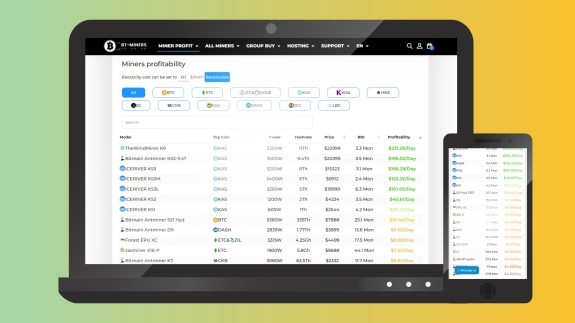Currently Empty: US$0.00

Get $20 off any order with code: CRYPTO2024

Track miners prices and profitability. Enjoy Miner Hosting, Rental, Order Tracking, After-Sales Support and other services!
 App Store
App Store
 Google Play
Google Play
 APK File
APK File



Realtime revenue estimates for all ASIC miners for sale, maximizing miners profits!

BT-Miners and Antpool have joined forces to offer a fantastic deal! For every month that you mine with Antpool, you will receive a BT-Miners store credit worth 1% of your mining profits. Click here to join the BT-Miners and Antpool collaboration now!
Miner hosting services are available at BT-Miners. Find out the benefits of mining from a hosting facility, including miner hosting with remote access.
Our crypto mining repair services can help fix your mining equipment in a dependable and effective way. Learn more about our miner repair services.
If you have mining rigs that you are looking to sell or trade-in, send us an email to store@bt-miners.com.
Mining cryptocurrency is a great way to expand your investment portfolio and make a profit while you are at it. However, in order to yield the best results from this trade, it’s vital that you have the proper mining hardware and knowledgeable support. BT-Miners is a premium crypto mining store that specializes in powerful crypto mining equipment. Whether you’re looking to upgrade your build or start from scratch, we have the crypto miner hardware you need to make larger quantities of Bitcoin, Litecoin, and more. Mining cryptocurrencies can be a profitable hobby or job. To learn which miners are in high demand, check out our miner profitability page. At BT-Miners, you can shop for leading brands like Bitmain/Antminer, Goldshell, Canaan/Avalonminer, iPollo, Whatsminer, Innosilicon, KOI, Jasminer, and S19 here. We’ll go the extra mile to provide you with the cryptocurrency mining hardware you need and even help you troubleshoot and repair problems.

You can connect your smartphone (iOS/Android) via the CoolBitX app, allowing quick and secure transactions.
BT-Miners is a trusted industry leader and one of the largest distributors for cryptocurrency mining hardware. We have offices in both the United States (New York) and China (Shenzhen) that offer technical support, miner hardware upgrades and repairs, and customer service. Our team of professionals aim to provide the best equipment and services for all the cryptocurrency lovers and to help people better understand mining, which is the foundation of cryptocurrency world.

 +1-813-820-0668
+1-813-820-0668 +971-800-012-0089
+971-800-012-0089 +91-22-5032-3009
+91-22-5032-3009 +44-333-015-6152
+44-333-015-6152 +61-2-8074-3443
+61-2-8074-3443© 2024 BT-Miners Global